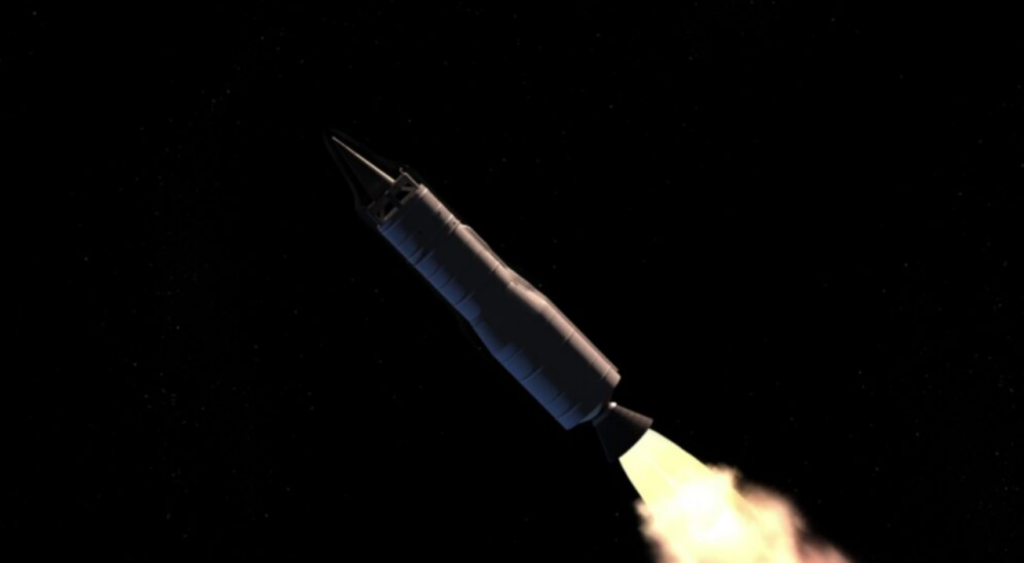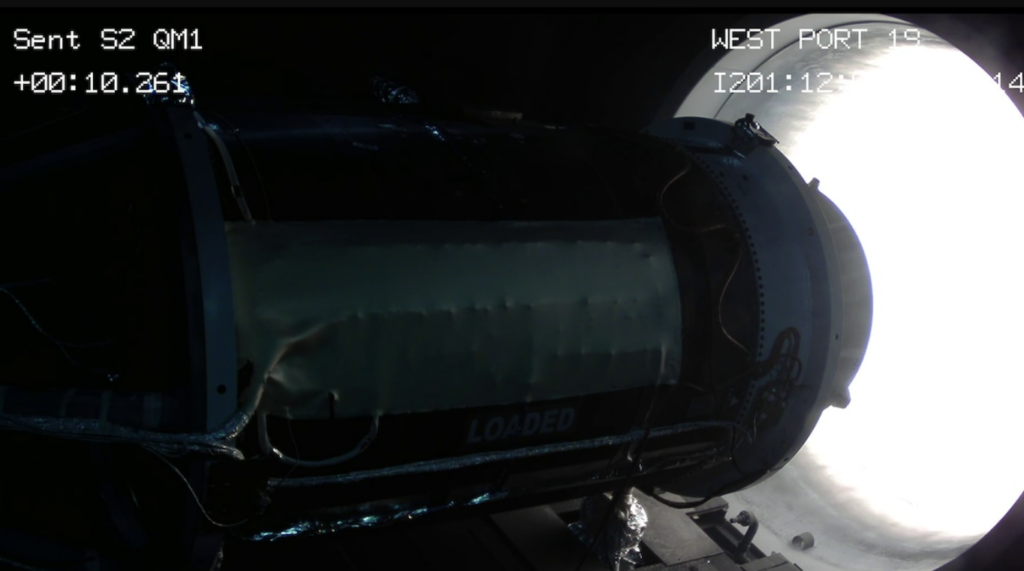US Air Force and Northrop Grumman Test LGM-35A Sentinel ICBM
The image above shows a Sentinel ICBM’s second-stage solid rocket motor firing during a vacuum-chamber test. The successful test was carried out on July 20, by U.S. Air Force engineers working with Northrop Grumman specialists, at Arnold Air Force Base in Tennessee. The success was announced in a joint Air Force/Northrop statement on July 29, 2025. This qualification test marks a critical milestone in the Sentinel program.

The stage-two rocket motor was fired in a vacuum chamber at the Arnold Engineering Development Complex to simulate high-altitude flight conditions during the full-scale qualification test. It measured the motor’s thrust, burn profile, and steering ability using its thrust vector control system. The data will help engineers confirm that the motor meets performance predictions and refine the design as the program moves toward production. Air Force officials say this disciplined digital engineering approach lets teams prove their models and stay on schedule.
Brig. Gen. William S. Rogers, who leads the Air Force’s ICBM program, said the test builds confidence not only in the hardware but also in the development timeline and the country’s deterrent capability. “This isn’t just about one motor test,” he added. “It’s about building confidence — in our engineering; in our program schedule; and, most importantly, in our ability to deter aggression and defend the nation”. The Air Force uses model-based design to simulate many scenarios and reduce reliance on costly hardware prototypes.
The LGM-35A Sentinel is a three-stage, solid-fueled missile designed to replace the aging LGM-30G Minuteman III ICBM fleet. It will replace about 400 Minuteman III missiles that have been in service for more than 50 years. A similar full-scale test of the Sentinel’s first-stage rocket motor was completed successfully earlier this year.
This successful engine test comes amid broader U.S. strategic modernization efforts. For example, existing Minuteman III launch silos and communications networks are being upgraded to support the new Sentinel system. Sentinel missiles will operate alongside new Columbia-class submarines and B-21 bombers as part of a modernized nuclear triad. Officials stress that nuclear deterrence is the Pentagon’s top priority and that replacing legacy systems like the Minuteman III is critical for national security. The Sentinel development will not change the total number of deployed land-based missiles; it will simply maintain a robust, modern force into the future.

